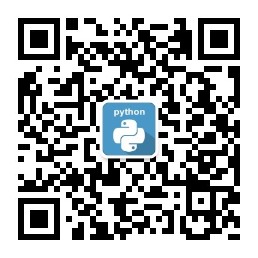近期学了一点Python,然后正好有一个手机同步工具方面的预研工作要完成。
要实现PC与手机的通信,首先要找到他们的通信协议,还好的是Android有完善的协议:ADB
ADB的代码是开源的,而且支持Windows平台,有现成的DLL可以调用:AdbWinApi.dll,AdbWinUsbApi.dll
好了,可以用VC搞定,但我想用Python试一下,于是开始了苦逼的查资料+实验的过程。
实验过程就不多说了,由于上面的两个DLL都是用C实现的,提供的头文件也是C语言的,所以有了下面这个python测试程序(Python2.7):
import ctypes
#自定义的GUID结构,有兴趣的可以自己研究用uuid模块
class GUID(ctypes.Structure):
_fields_ = [("Data1", ctypes.c_ulong),
("Data2", ctypes.c_ushort),
("Data3", ctypes.c_ushort),
("Data4", ctypes.c_ubyte*8)]
#自己定义的一个结构体,便于使用DLL接口
class AdbInterfaceInfo(ctypes.Structure):
_fields_ = [("class_id", GUID),
("flags", ctypes.c_ulong),
("device_name", ctypes.c_wchar*800)]
def strGUID(GUID):
string = ''
string = string + '%x' % buff.class_id.Data1 + '-%x' % buff.class_id.Data2 + '-%x' % buff.class_id.Data3
string = string + '-%x' % buff.class_id.Data4[0]
string = string + '%x' % buff.class_id.Data4[1]
string = string + '%x' % buff.class_id.Data4[2]
string = string + '%x' % buff.class_id.Data4[3]
string = string + '%x' % buff.class_id.Data4[4]
string = string + '%x' % buff.class_id.Data4[5]
string = string + '%x' % buff.class_id.Data4[6]
string = string + '%x' % buff.class_id.Data4[7]
return string
dll = ctypes.cdll.LoadLibrary('AdbWinApi.dll')
usb_class_id = GUID(0xF72FE0D4, 0xCBCB, 0x407d, (0x88, 0x14, 0x9e, 0xd6, 0x73, 0xd0, 0xdd, 0x6b))
enum_handle = dll.AdbEnumInterfaces(usb_class_id, ctypes.c_bool('true'), ctypes.c_bool('true'), ctypes.c_bool('true'))
while(1):
buff = AdbInterfaceInfo()
size = ctypes.c_ulong(ctypes.sizeof(buff))
status = dll.AdbNextInterface(enum_handle, ctypes.byref(buff), ctypes.byref(size))
if status==1:
#print "GUID = " + strGUID(buff.class_id)
#print "status = " + str(status)
#print "Name = " + str(buff.device_name)
hAdbApi = dll.AdbCreateInterfaceByName(buff.device_name);
if hAdbApi == 0:
print 'AdbCreateInterfaceByName Fail'
else:
serial = ' '*128
pserial = ctypes.c_char_p()
pserial.value = serial
serial_len = ctypes.c_ulong(len(serial))
ret = dll.AdbGetSerialNumber(hAdbApi, pserial, ctypes.byref(serial_len), ctypes.c_bool('false'));
if ret == 1:
print 'Device Name: ' + '%s'% serial
else:
print 'Get Device Name Fail'
else:
print 'Finished'
break
import ctypes
#自定义的GUID结构,有兴趣的可以自己研究用uuid模块
class GUID(ctypes.Structure):
_fields_ = [("Data1", ctypes.c_ulong),
("Data2", ctypes.c_ushort),
("Data3", ctypes.c_ushort),
("Data4", ctypes.c_ubyte*8)]
#自己定义的一个结构体,便于使用DLL接口
class AdbInterfaceInfo(ctypes.Structure):
_fields_ = [("class_id", GUID),
("flags", ctypes.c_ulong),
("device_name", ctypes.c_wchar*800)]
def strGUID(GUID):
string = ''
string = string + '%x' % buff.class_id.Data1 + '-%x' % buff.class_id.Data2 + '-%x' % buff.class_id.Data3
string = string + '-%x' % buff.class_id.Data4[0]
string = string + '%x' % buff.class_id.Data4[1]
string = string + '%x' % buff.class_id.Data4[2]
string = string + '%x' % buff.class_id.Data4[3]
string = string + '%x' % buff.class_id.Data4[4]
string = string + '%x' % buff.class_id.Data4[5]
string = string + '%x' % buff.class_id.Data4[6]
string = string + '%x' % buff.class_id.Data4[7]
return string
dll = ctypes.cdll.LoadLibrary('AdbWinApi.dll')
usb_class_id = GUID(0xF72FE0D4, 0xCBCB, 0x407d, (0x88, 0x14, 0x9e, 0xd6, 0x73, 0xd0, 0xdd, 0x6b))
enum_handle = dll.AdbEnumInterfaces(usb_class_id, ctypes.c_bool('true'), ctypes.c_bool('true'), ctypes.c_bool('true'))
while(1):
buff = AdbInterfaceInfo()
size = ctypes.c_ulong(ctypes.sizeof(buff))
status = dll.AdbNextInterface(enum_handle, ctypes.byref(buff), ctypes.byref(size))
if status==1:
#print "GUID = " + strGUID(buff.class_id)
#print "status = " + str(status)
#print "Name = " + str(buff.device_name)
hAdbApi = dll.AdbCreateInterfaceByName(buff.device_name);
if hAdbApi == 0:
print 'AdbCreateInterfaceByName Fail'
else:
serial = ' '*128
pserial = ctypes.c_char_p()
pserial.value = serial
serial_len = ctypes.c_ulong(len(serial))
ret = dll.AdbGetSerialNumber(hAdbApi, pserial, ctypes.byref(serial_len), ctypes.c_bool('false'));
if ret == 1:
print 'Device Name: ' + '%s'% serial
else:
print 'Get Device Name Fail'
else:
print 'Finished'
break上面这个简单的Python代码,可以通过AdbWinApi.dll和AdbWinUsbApi.dll这两个DLL来找到你PC上正连接着的Android设备。
只调用了3个DLL接口,但目的已经达到,可以得出下面的结论:
使用Python调用DLL的方式来实现ADB工具是可行的,当然麻烦是不会少的了。
写在最后,Python调用C写的DLL还是比较麻烦的,特别是参数传递,尤其是指针的处理,这方面还得依靠ctypes模块。。。


